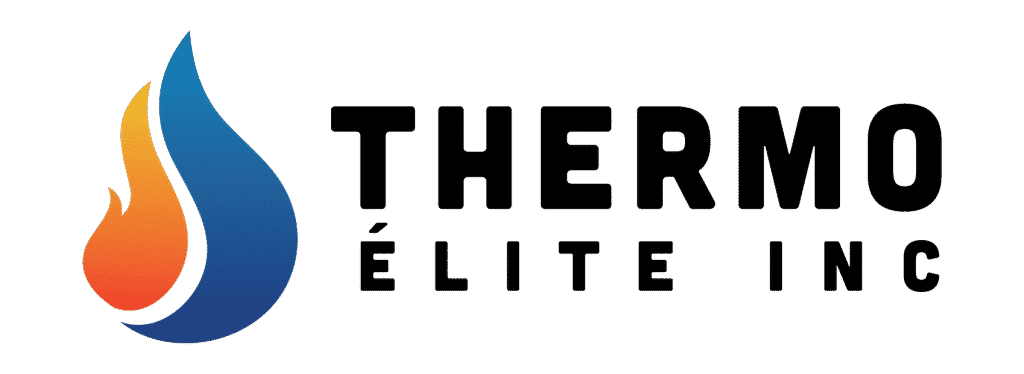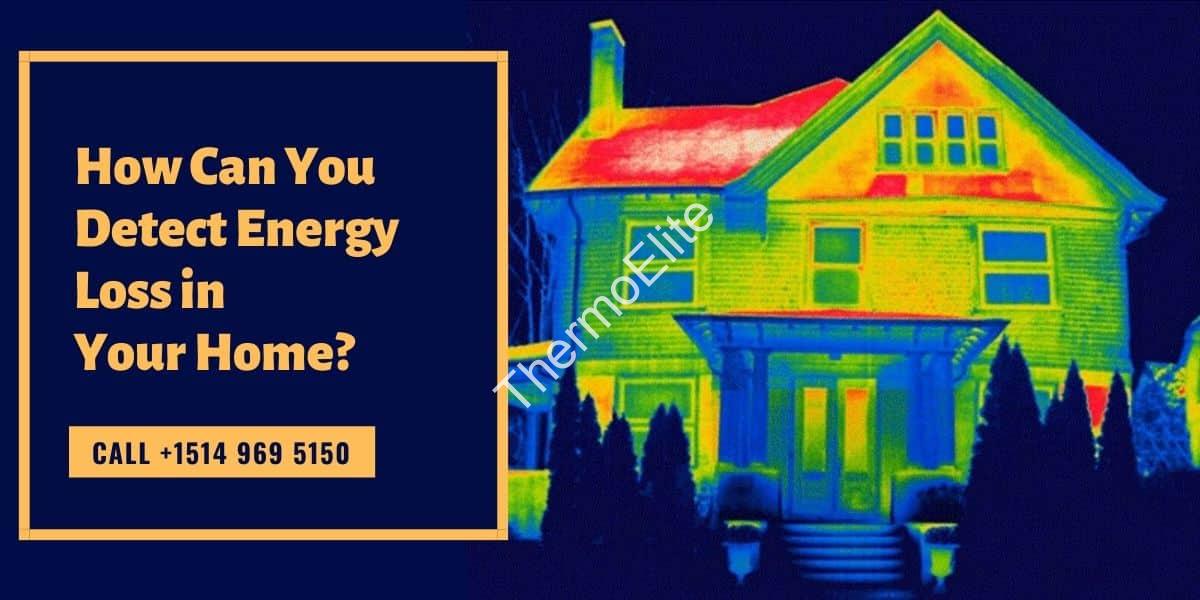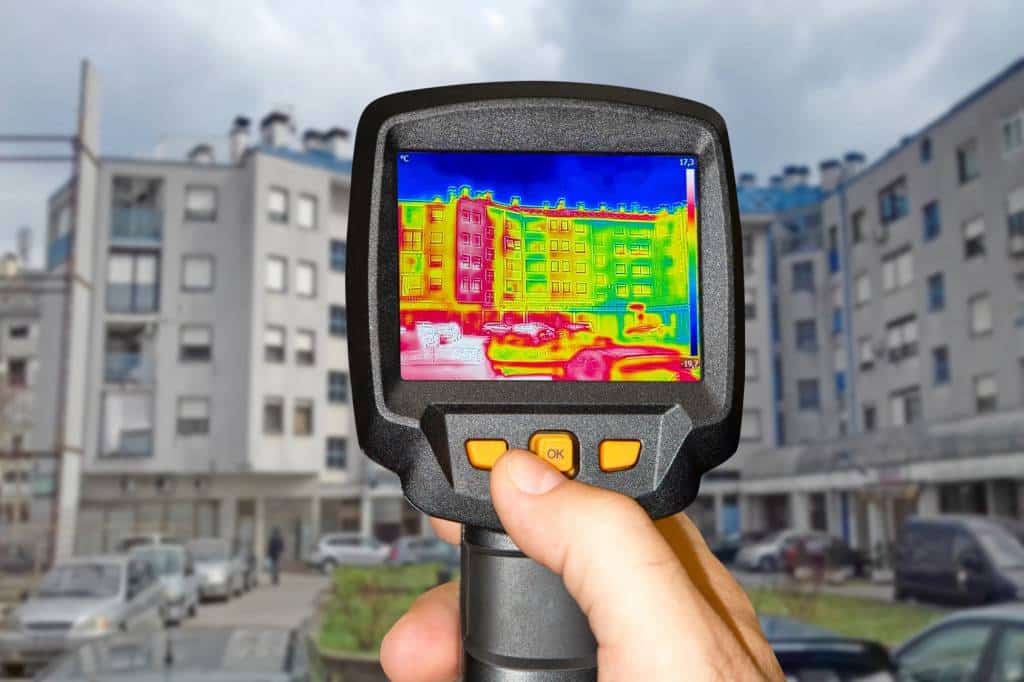Are you tired of paying sky-high energy bills every month?
Discover how to identify energy loss in your home and save money with these simple tips!
Energy is a basic need for the modern human. At your home, you require energy in many different forms. Majorly, we make use of electrical energy to drive most of the machines and systems that we have at our homes. Energy in whatever form costs money. You obviously have to pay electric bills every other month. It is important that you use the energy available to you in the best way possible. If you are a wasteful person, you might end up incurring hefty energy bills.
Infrared thermographic imaging is one of the best methods of inspecting your home for energy loss. However, many people often commission an infrared thermographic inspection after detecting something is amiss with their power bills. By such a time, they may have incurred significant losses in energy loss. It is, therefore, important to conduct infrared thermographic inspections from periodically.
In the following sections, we are going to explore the various indicators of energy loss in your home, and the benefits of conducting infrared thermographic inspections. We’ll explore why you do not need to wait to see the said indicators before you conduct an inspection.
Energy Loss Indicators
One of the most obvious indicators of energy loss in a home is a spike in power bills. If you notice you’ve paid a significantly higher power bill than you usually do, and you haven’t added any appliances to your home or changed your energy use, it most likely is that your home is losing energy in one way or the other. Note that power bills do not remain the same every month. They fluctuate depending on the activities you’ve been carrying out through the month. As such, subtle fluctuations should not cause any alarm.
Your heating system is also another indicator of energy losses. The most notorious cause of energy loss in a home is leaking insulation. If your insulation is leaking, you might be forced to keep turning up your heater. If you notice you are being forced to turn up your heater after every few minutes, you should know your insulation is faulty, and the heat generated is getting lost. Ultimately, you’ll end up incurring massive power bills.
The other cause of energy losses is faulty and worn-out appliances and electrical components. It is important to keep a keen eye on all the electrical appliances in your home and ensure they are in good condition. If any of them develops faults, it is important that you get it repaired as soon as possible.
We’ll now explore how you can prevent energy losses in your home, and ensure you do not pay excessive power bills. Before we get to that, let’s discuss how infrared thermographic inspection can help in detecting what’s causing energy losses.
Infrared Thermographic Inspections
As mentioned above infrared thermographic inspections are the latest frontier when it comes to home inspections. These inspections will quickly reveal all the energy loopholes in your home. If you come across any of the indicators above, you need to commission an infrared thermographic inspection in your home. You need to have all your systems inspected to determine what might be causing the energy loss. Below, we explore some of these causes and how infrared thermographic inspections help in detecting them.
We’ve already mentioned above that the most notorious cause of energy loss is leaking insulation. Insulation inspection is one of the major applications of infrared thermographic inspection. Thermal imaging is done when there are significant differences between the temperature inside a house and that outside. Any leaks are easy detected from such thermal images.
Leaking pipes might also be causing energy losses. Leaking pipes will make part of the house humid. You’ll be forced to heat up your house a lot more than usual in order to compensate for the heat that is being absorbed by the wet patches. Thermal imaging is also quite effective in the detection of such wet patches. Wet patches absorb more heat than the surrounding areas. This makes it quite easy to isolate and identify the using an infrared thermographic camera.
The other major cause of energy loss is faulty electrical systems and appliances. Thermal cameras are the best when it comes to inspecting the condition of an electric system. Electrical components tend to overheat when they become faulty or worn out. The overheating causes a lot of energy loss and will cause you to incur massive electricity costs.
In all these instances a comprehensive infrared thermographic inspection will reveal all the faults and leaks. If you seek the services of a professional home inspector, they will recommend an appropriate course of action to ensure all the energy loopholes have been sealed. The inspections ensure you do not have to spend massive amounts on repairs.
How Infrared Thermographic Imaging Works?
To better understand how infrared thermographic imaging can help in detecting the various causes of energy loss in a home, let’s explore how infrared thermographic imaging works. We’ve already mentioned that infrared thermographic imaging is banked on temperature differences. Infrared thermographic cameras are used to capture thermal images of the various object in the house.
Object and surfaces within the house are bound to have different temperatures at different times. When thermal images of these objects are taken, they appear quite different on the camera. For instance, if it is the electrical system being inspected, faulty parts of the system tend to appear red due or orange due to overheating.
During an inspection, the inspector will capture a series of images and footage around the home, and then analyze them in order to find out which parts have issues. It is important that you seek the services of a professional home inspector if you suspect your home is losing energy. They will be able to conduct are thorough inspection and detect all the possible loopholes so that they can be sealed up.
The prevention of energy loss is an ongoing process. It is not a one-off process. Once you properly understand various aspects of the way your home is built, you are able to ensure everything is working properly. We now get into the nitty-gritty of how you can prevent energy losses in your home.
Preventing Energy Losses
No one wants to be incurring huge power bills every month. If you do not take the necessary steps to prevent energy loss in your home, you will soon be faced with such a predicament. We have talked of conducting infrared thermographic inspections. However, you need to do more than just conducting inspections in order to ensure the energy you generate at your home is used as efficiently as possible.
The first step to ensuring you use energy efficiently is understanding how much energy or power you need at your home. Different people have different power requirements depending on the systems and appliances that they have in their home. You also need to factor in the changed to power requirements every time you install a new system or bring home a new appliance. The understanding of your energy requirements ensures you can keep track of how efficiently energy is being used at your home. You would never notice any changes in your home if you do not know how much energy you are supposed to be used in the first place.
The other measure is to avoid spending energy where it is not needed. For instance, lights should not stay on all the time, when there is an alternative to use natural light. Always ensure that energy is put into good use at all times. There is no point in turning up fans in the house when you can simply open windows and let some breeze in.
Apart from the austerity measures outlined above, the other main way of preventing energy loses is the repairs that come after the infrared thermographic inspections have been done. This is where the importance of conducting the inspections periodically is prominent. Truth be told. No matter how careful you are with your house and systems, it is inevitable that it will develop some hitches and breakdowns here and there. No matter how simple a fault looks it is always important that you get it repaired immediately. These simple faults often turn in massive problems after some time and cause you to incur huge expenses in repair costs and power bills.
Infrared thermographic inspections have formed the basis of our discussions. That’s because they go a long way in ensuring you can counter energy losses in your home in good time. There are plenty of benefits in thermal imaging inspections. To conclude our discussions, we are going to explore some of the benefits of thermal imaging inspections that are related to the prevention of energy loss in the home. The idea is to show how these inspections make it easy to ensure your home remains in proper condition, and energy is used up efficiently in your home.
Energy Saving Benefits of Thermal Imaging
Thermal imaging ensures all the impending faults are caught before they occur. This will certainly prevent energy losses, as well as ensure you do not go through any downtimes. For instance, in the case of a factory or a processing plant, thermal imaging allows the inspection to be conducted while the plant runs. As such, the plant does not have to face any downtime or operational loss just because an inspection needs to be conducted.
Time saving is also another way of saving energy and money. Thermal imaging inspection inspections are incredibly quick. The inspector will be in and out of your premises within minutes. As we’ve already discussed, thermal imaging involves capturing images of every part of your home.
The infrared thermographic cameras are able to image large parts of a wall or structure, especially if they have a good quality lens. That means the inspector needs just a couple of images to be able to detect all the energy loopholes and leave you to conduct the necessary repairs. If you know how to handle and infrared thermographic camera, you can take the images yourself. Thermal imaging is not particularly rocket science, but you may need the input of an experienced inspector in some cases.
Thermal imaging also eliminates the need for any demolitions or digging while conducting the inspection. Infrared thermographic cameras will capture images of an object that are hidden from view. Imagine the costs you would have to incur if some part of your walls had to be demolished in order to access particular parts of a system and inspect them. Demolitions usually come after the inspection is complete and repairs are necessary, but they are often subtle because one already knows where the fault is, or what needs to be repaired. This is another way in which thermal imaging saves time, money, and energy.
There are a lot of benefits to using thermal imaging, and they all contribute to saving energy, time, and money in one way or another. The thermal imaging technology has gained a lot of momentum in recent years, and more efforts are being paid into improving the technology. There are very strong infrared thermographic cameras on the market today. The latest models are being developed as user-friendly and easy to use. The idea is to ensure that it is easy for ordinary people to be able to purchase these cameras an inspect their homes themselves.
The last thing any homeowner needs in their home is energy losses and large power bills. If they are able to anticipate detect and repair all the possible energy loopholes in their homes, they’ll never have to deal with such losses. The cost of doing inspections is much less than that of doing repairs. As such, it is best that inspections are done regularly so that faults are solved quickly and efficiently before they develop in bigger problems. Even if you have to do the repairs, the cost of doing the repairs is in most cases much less, than the cumulative amount you will lose after paying excess power bills over a couple of months.





Add Comment